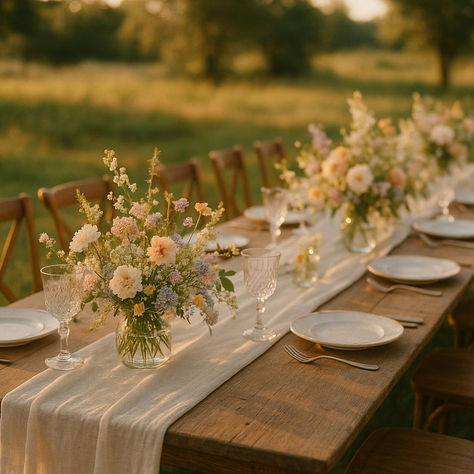Wedding Venue Capacity Guide: Finding the Right Fit
- Colin

- Feb 14
- 7 min read
Updated: Mar 20
- Guest Count: Estimate attendance (85% local, 55% out-of-town) to avoid over- or under-booking.
- Space Per Person: Plan for 15 sq ft per person for seated events, 6-8 sq ft for ceremonies, and 2-4 sq ft per dancer.
- Hill Country Challenges: Add 20-30% more space for uneven terrain and natural features.
- Safety: Check fire codes, emergency exits, and ADA accessibility.
- Flexibility: Use round tables for interaction or rectangular ones for tight spaces.
- Traffic Flow: Place bars, buffets, and dance floors strategically to avoid congestion.
- Backup Plans: Always have a weather contingency for outdoor venues.
Quick Tips:
- Ask Venues: About capacity rules, setup options, and vendor logistics.
- Use Tools: Digital floor planners like AllSeated to visualize layouts.
- Compare Venues: Score them on capacity, flow, amenities, and weather options.
This guide simplifies the process, helping you create a comfortable, safe, and memorable event. Dive into the details for more actionable advice!
Calculating Space Needs
Guest Count Planning
Start by organizing your guest list into two groups: A-list (must-invite) and B-list (optional). This helps you estimate attendance more accurately. Typically, around 85% of local guests and 55% of out-of-town guests will attend.
Space Requirements by Area
Here's a quick guide to how much space you'll need for different parts of your event:
Area | Sq Ft/Person | Details |
Ceremony | 6-8 | Theater-style seating |
Round Tables | 11-12 | Room for chairs to move |
Rectangular Tables | 9-10 | More space-efficient option |
Dance Floor | 2-4 | Per dancer |
Buffet | 100-200 | Per station |
Bar | 100-200 | |
DJ/Band | 200-400 | |
Gift Table | 100 | Includes guest book area |
These numbers provide a solid starting point. Now, let’s look at how these change for Hill Country venues in Texas.
Hill Country Site Planning
Hill Country venues often require adjustments due to unique terrain features. For example, The Alamo Wedding Venue & Events Center in Mason, TX, uses a limestone courtyard to address these challenges.
When planning for these locations, keep the following in mind:
- Add 20-30% extra space to account for slopes or uneven ground.
- Allow 2-3 additional sq ft per person for shaded areas.
- Maintain 20-30 ft buffers around natural features like trees or rocks.
- Reserve 500-1,000 sq ft for outdoor vendor setups.
For outdoor events, always have a weather backup plan. Your indoor contingency space should fit your entire guest list and meet the minimum 15 sq ft per person guideline.
Top 10 Wedding Venues in Texas Hill Country
What to Ask Venue Staff
Once you’ve figured out how much space you’ll need, it’s time to ask the venue staff the right questions to ensure everything runs smoothly.
Maximum Capacity Rules
Get a clear understanding of the venue's capacity by asking these key questions:
Question Type | What to Ask | Why It Matters |
Legal Limits | What is the fire code maximum occupancy? | Helps you stay compliant with safety regulations |
Event Style | How does capacity differ for seated dinners versus cocktail receptions? | Affects how many guests you can invite |
Space Usage | How do features like dance floors, bars, or audio-visual setups impact available space? | These elements can reduce the usable area |
Space Options and Setup
For venues like Hill Country locations, terrain can complicate transitions between spaces. Be sure to ask:
Multi-Space Utilization
- Get a detailed capacity breakdown for ceremony, cocktail, and reception areas.
- Ask about plans for transitioning between spaces during the event.
Setup Flexibility
- Find out if the venue provides tables and chairs or if you’ll need to rent them.
- Confirm placement rules for key elements like dance floors, bars, and AV equipment.
- Ask about permanent fixtures (like limestone walls or oak trees) that could affect your layout.
Vendor Considerations
- Clarify how vendor setup areas fit into the overall space plan, especially if you’re working with tight square footage (e.g., 500-1,000 sq ft).
- Confirm designated setup areas and when vendors can arrive.
- Double-check how AV equipment might limit usable space for guests.
Floor Plan Design
Designing a thoughtful floor plan is key to making the most of your venue's space while keeping guests comfortable. A well-planned layout can turn even tricky spaces into ideal wedding settings. It also ensures your venue's capacity is used efficiently, especially important for Hill Country venues with fixed size limits. Essentially, it’s about turning those capacity numbers into practical, functional layouts.
Table Layout Options
Choosing the right table setup can make a big difference in how your space feels and functions. Round tables (60" diameter) are a popular choice, seating 8-10 guests and encouraging conversation. If you’re working with narrow spaces or terraces, rectangular tables (8' long) might be a better option, as they use space more efficiently.
Table Type | Space Required | Guest Capacity | Best For |
60" Round | 100-120 sq ft | 8-10 guests | Open layouts, fostering interaction |
8' Rectangular | 80-100 sq ft | 8-10 guests | Tight spaces, formal settings |
Mix of Both | Varies | Flexible | Multi-room or indoor/outdoor setups |
For spacing, leave 60" between round tables and 54" between rectangular ones. Ensure staff pathways are at least 72" wide for smooth service.
Traffic Flow Planning
Strategic placement of key elements can prevent bottlenecks and keep the event running smoothly. The dance floor should be centrally located, sized at 4-5 square feet per person, assuming about half the guests will dance at once. For instance, a 100-guest wedding would need a 200-250 square foot dance area.
Bars are another critical consideration. Place them away from main walkways and entrances to avoid congestion. A good rule is one bar per 100 guests, with at least 10 feet of clearance from dining tables. For buffet stations, plan for 2 feet of table length per 25 guests and 4-5 feet of queue space to maintain flow.
Layout Pitfalls to Avoid
Certain mistakes in floor planning can disrupt your event. Here are some common issues to steer clear of:
Space Allocation Problems
- Overcrowding tables
- Not leaving 5-foot-wide pathways between key areas
Traffic Flow Issues
- Bars placed too close to entry points
- Buffet lines without enough room for guests to queue
- Dead ends that hinder guest movement
Service Disruptions
- Blocking access to kitchen or service areas
- Not enough room for staff to move between tables
- Poor placement of vendor stations (refer to earlier vendor setup tips)
Digital tools like AllSeated or Social Tables can be incredibly helpful for testing layouts before committing. These platforms let you visualize traffic patterns and make adjustments, ensuring your plan is both functional and guest-friendly.
Safety and Access Requirements
When determining venue capacity, it's essential to focus on safety and accessibility. This ensures a comfortable experience for guests while meeting legal standards.
Safety Codes and Limits
Make sure the venue complies with International Building Code standards, which mandate at least two emergency exits for gatherings of 50 or more people.
Area Type | Required Space | Example for 200 Guests |
Main Event Space | 15 sq ft per person | 3,000 sq ft |
Emergency Exit Path | Minimum 72" wide | Two exits required |
Always check the venue's occupancy permit and recent safety inspection reports. Confirm that emergency exits are unobstructed and that staff are trained in evacuation procedures.
Outdoor Backup Plans
For outdoor events, having a solid contingency plan is crucial. These should include:
- Sheltered areas that can accommodate all guests
- Portable heating or cooling units
- Elevated flooring to avoid muddy conditions
- Backup generators for essential systems
Look for venues with indoor storm shelters and staff skilled in weather monitoring. Additionally, inquire about partnerships for last-minute equipment rentals.
Guest Access Needs
Roughly 20% of guests may require mobility accommodations. Ensure the venue provides:
- 32-inch-wide clear pathways throughout
- ADA-compliant restrooms with adequate turning space
- Ramps with a 1:12 slope for level changes
- Slip-resistant flooring in all areas
For venues with challenging terrain, such as Hill Country properties, it's worth noting that many historic locations maintain their charm while meeting accessibility requirements through subtle ramp additions and widened pathways.
Venue Comparison Methods
Once you've finalized safety requirements and layout plans, it's time to objectively evaluate your shortlisted venues. Using a structured approach ensures you don't miss any crucial details.
Scoring System Setup
Create a weighted scoring matrix to evaluate venues based on your priorities. Assign percentage weights to key factors like capacity, layout, and amenities:
Factor | Weight | What to Evaluate |
Physical Capacity | 30% | Square footage, max occupancy |
Layout Flexibility | 20% | Room divisions, setup options |
Flow Efficiency | 15% | Traffic patterns, bottlenecks |
Amenity Access | 15% | Restrooms, parking availability |
Weather Backup | 20% | Indoor/outdoor flexibility |
Here’s how to use the scoring system:
- Rate each factor on a scale of 1 to 5.
- Multiply the rating by the assigned weight.
- Add up the scores to compare venues.
For venues that meet your scoring threshold, use digital tools to double-check spatial assumptions.
Digital Tour Tips
Leverage digital tools to evaluate venues remotely and efficiently:
- Virtual Tour AssessmentUse virtual tours to measure spaces, view different angles, check lighting, and assess transitions between areas.
- Layout VisualizationCreate scaled floor plans, experiment with table arrangements, and test guest flow patterns to ensure smooth movement.
- Organized DocumentationSave virtual tour screenshots, floor plans, and capacity calculations in a digital folder for easy reference.
If you're evaluating venues in areas like Hill Country, pay close attention to elevation changes and natural features during your digital review. These details can impact how the space is used and should not be overlooked.
Conclusion
Choosing the right wedding venue capacity involves balancing several factors to create a comfortable and memorable celebration. With the average wedding hosting about 167 guests, it’s important to plan for space needs and vendor logistics to ensure everything runs smoothly. Use the scoring system mentioned earlier to assess how well potential venues meet your requirements.
When considering venue capacity, think about both the physical space and practical details. For locations in the Hill Country, such as limestone courtyards or oak groves, keep in mind challenges like uneven terrain and varying weather conditions.
Key factors to consider include:
- Flow and Function: Ensure smooth movement for guests throughout the event.
- Comfort Features: Make sure the venue accommodates accessibility needs and has enough amenities.
- Safety Standards: Check compliance with fire codes and occupancy restrictions.
- Layout Flexibility: Choose a space that can adapt to changes in your guest list.
As detailed in Venue Comparison Methods, combine tools like 3D modeling with in-person visits to get a full understanding of each venue. Focus on creating a space that prioritizes guest comfort over simply maximizing capacity. This approach will help foster the warm, inviting atmosphere that Texas Hill Country venues are celebrated for.















Comments